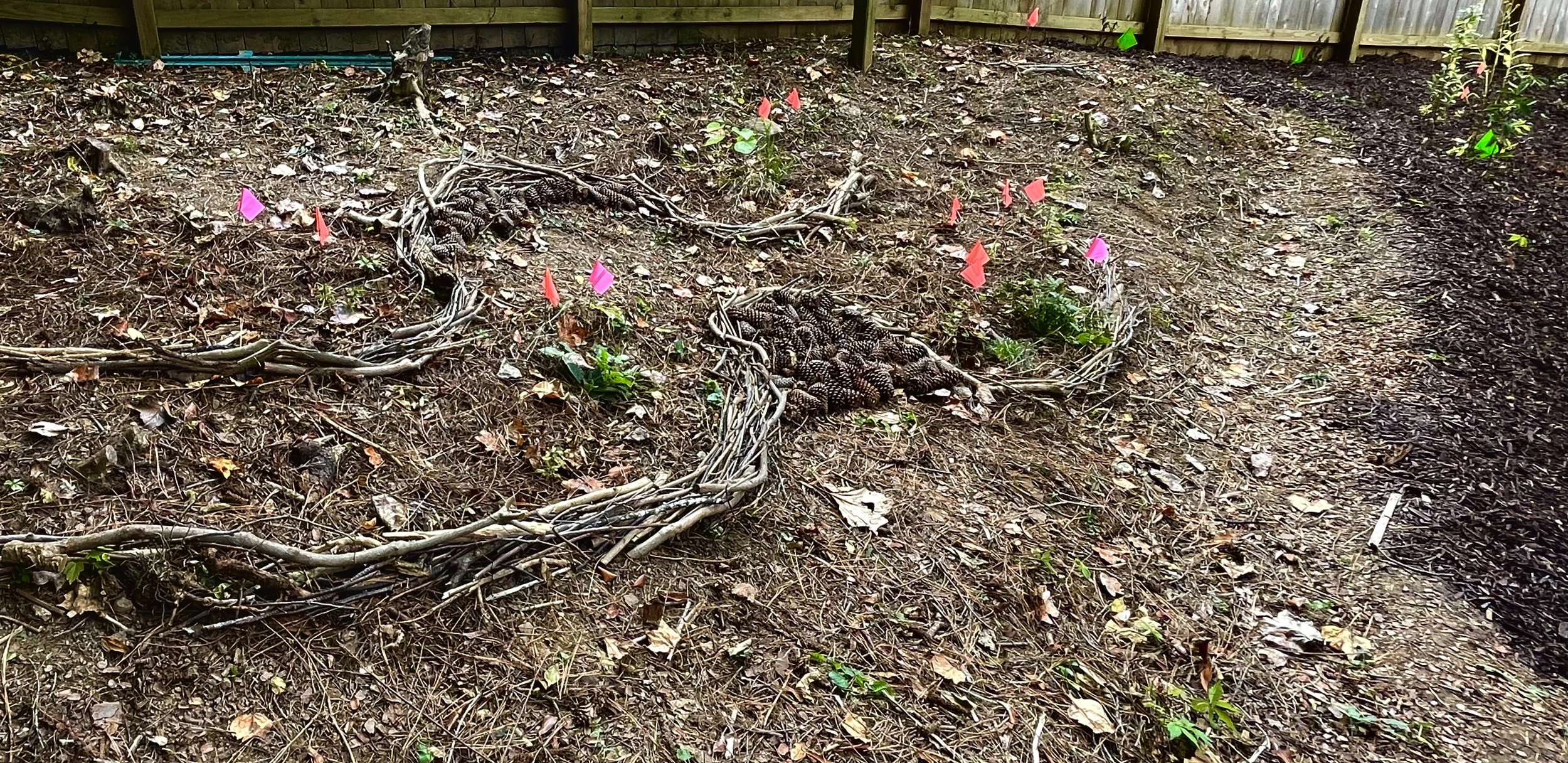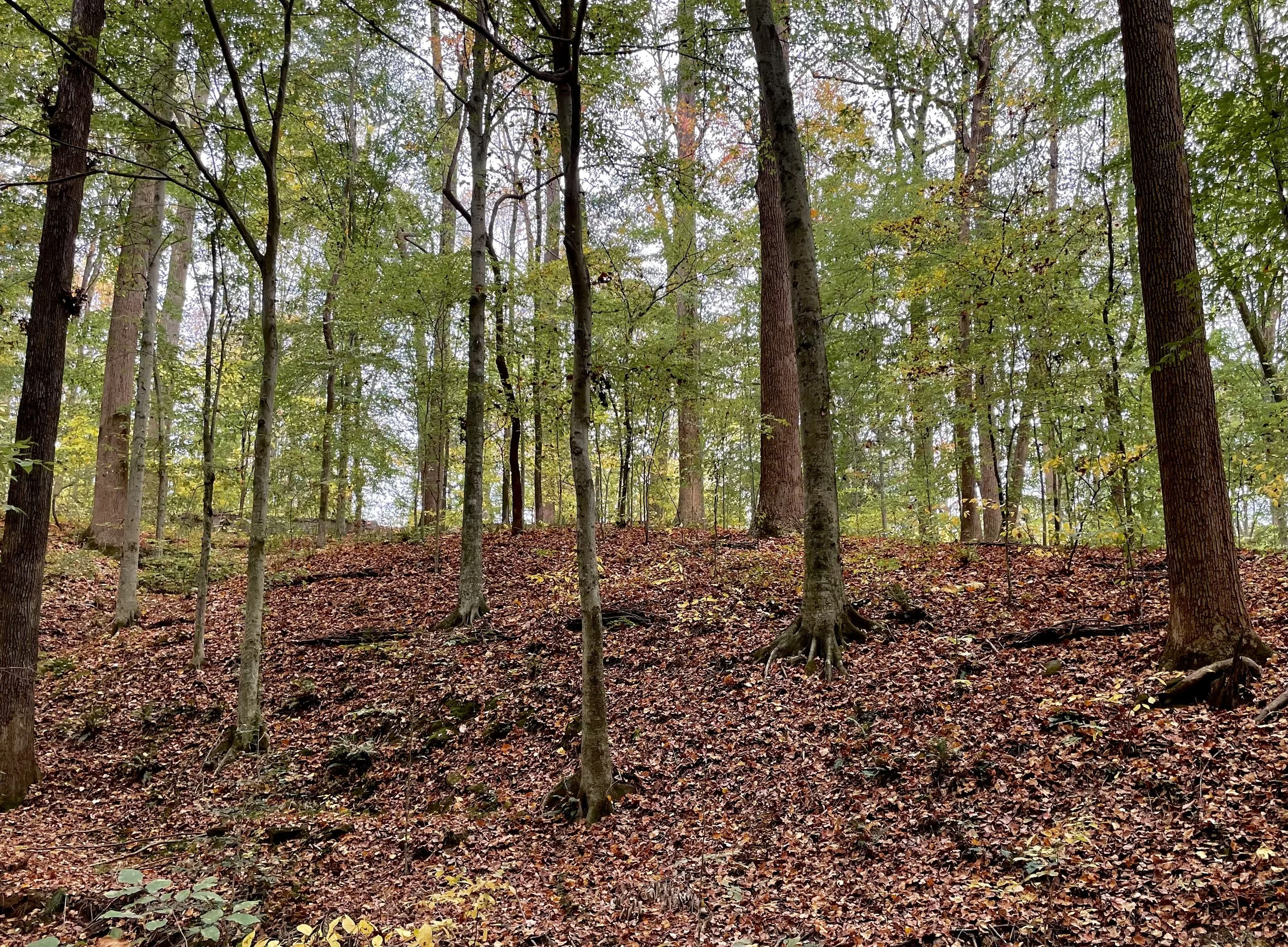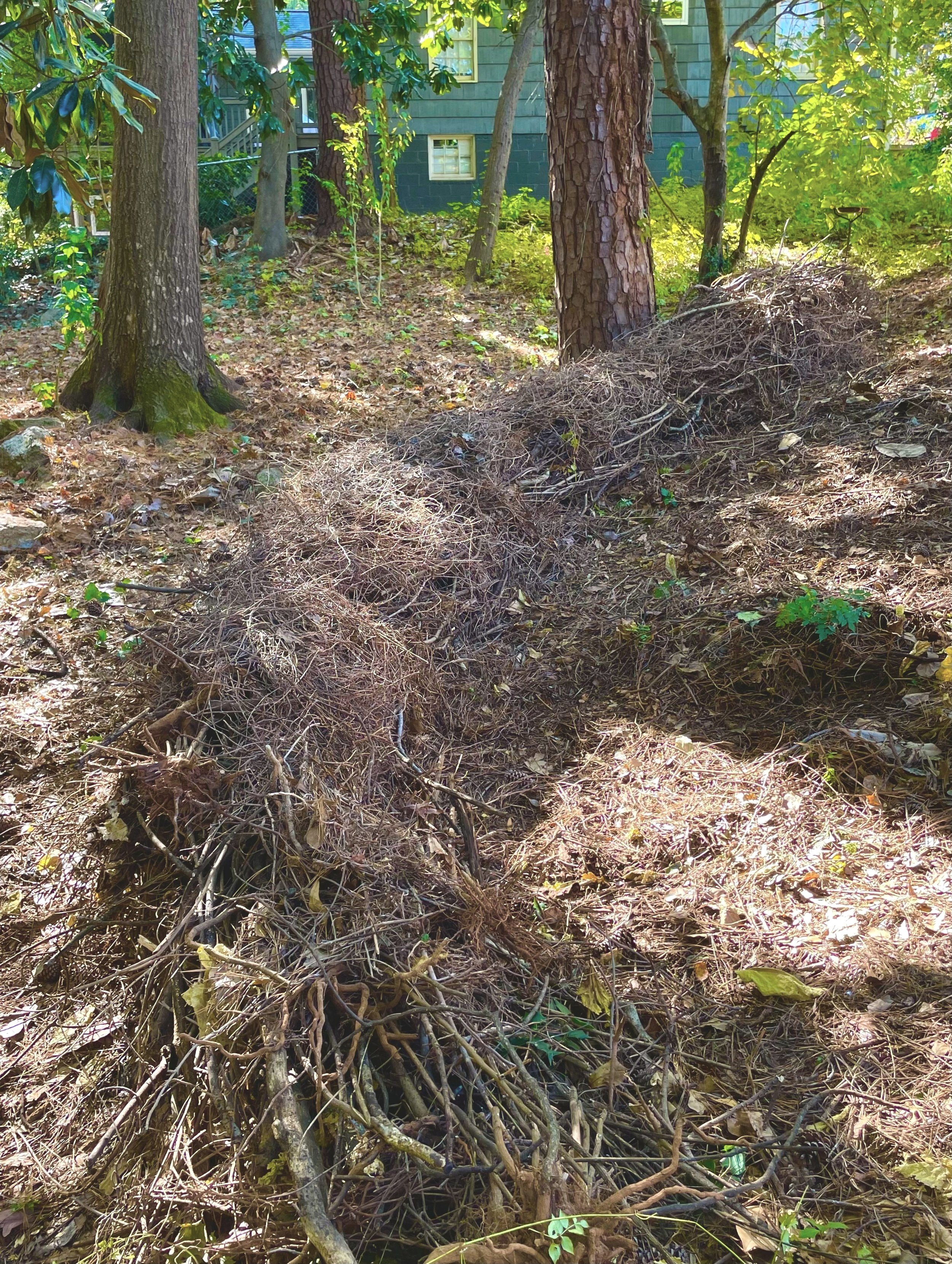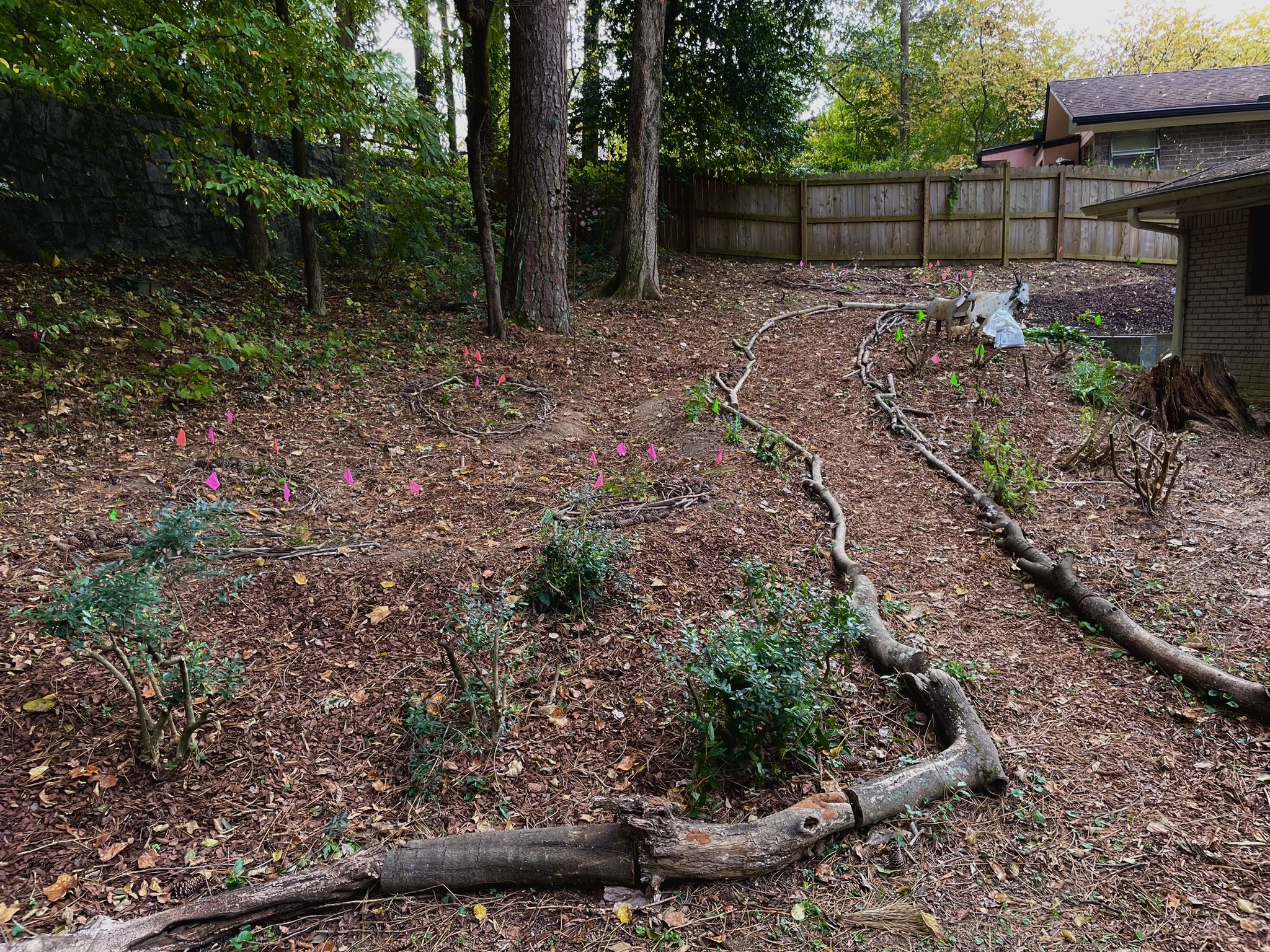
Effective cues of care can invite interaction and/or participation from users. Signage can be especially helpful in providing information to avoid confusion while regeneration is in progress.

Cues can be as simple as targeted mowing, where certain plant clusters are left untouched, resulting in plenty of site access while highlighting different native plant populations.

Often, cues are natural constructions, taking their inspiration from the unique textures and shapes of the site’s ecology.

Cues offer an alternative to wasteful conventional landscape practices; deadwood, pinecones, perennial stems and other site materials will continue to be added back in rather than removed from the site.

All of our natural constructions are multi-functional. Brush berms are an effective erosion control measure, providing a subtle visual cue so that worked areas can be revisited for efficient management.

Brush berms can be employed to protect establishment of newly installed plants/seed, before eventually decomposing into the slope and adding organic matter back into the soil that will feed the new native plants. They are also habitat for various kinds of beneficial wildlife.

Deadhedges can be shaped for site definition by breaking up the space, creating levels and modifying sightlines. Their value as wildlife habitat, particularly for songbirds which require a safe midstory to forage from, invites users to engage more closely with nature. More deadhedges = more birds!

Native vines easily colonize deadhedges and can give the appearance of a living hedge over time. Crossvine and trumpet creeper from the surrounding area were woven into this deadhedge. These vines produce flowers that attract hummingbirds.

Path edging ensures walkways are defined so that newly installed native plants and seeded areas can grow in with minimal disturbance, and fragile areas remain intact.

Planting bed edging improves visibility of newly installed native communities.

Better visibility for client convenience results in easier management of curated native communities.













